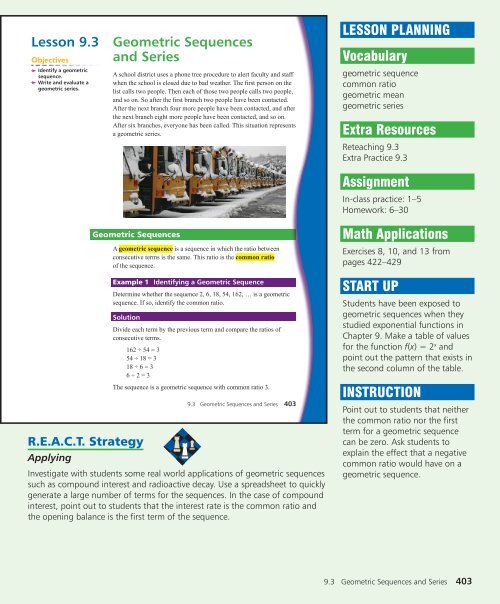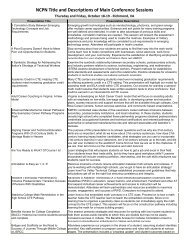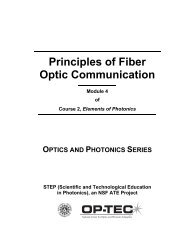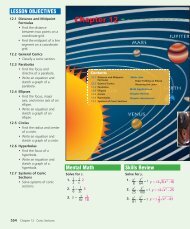hvvrq $ulwkphwlf 6htxhqfhv dqg 6hulhv - NCPN
hvvrq $ulwkphwlf 6htxhqfhv dqg 6hulhv - NCPN
hvvrq $ulwkphwlf 6htxhqfhv dqg 6hulhv - NCPN
You also want an ePaper? Increase the reach of your titles
YUMPU automatically turns print PDFs into web optimized ePapers that Google loves.
LESSON PLANNING<br />
Vocabulary<br />
geometric sequence<br />
common ratio<br />
geometric mean<br />
geometric series<br />
Extra Resources<br />
Reteaching 9.3<br />
Extra Practice 9.3<br />
Assignment<br />
In-class practice: 1–5<br />
Homework: 6–30<br />
<br />
<br />
<br />
<br />
<br />
<br />
<br />
<br />
<br />
<br />
<br />
<br />
<br />
<br />
R.E.A.C.T. Strategy<br />
Applying<br />
<br />
<br />
Investigate with students some real world applications of geometric sequences<br />
such as compound interest and radioactive decay. Use a spreadsheet to quickly<br />
generate a large number of terms for the sequences. In the case of compound<br />
interest, point out to students that the interest rate is the common ratio and<br />
the opening balance is the first term of the sequence.<br />
Math Applications<br />
Exercises 8, 10, and 13 from<br />
pages 422–429<br />
START UP<br />
Students have been exposed to<br />
geometric sequences when they<br />
studied exponential functions in<br />
Chapter 9. Make a table of values<br />
for the function f(x) = 2 x and<br />
point out the pattern that exists in<br />
the second column of the table.<br />
INSTRUCTION<br />
Point out to students that neither<br />
the common ratio nor the first<br />
term for a geometric sequence<br />
can be zero. Ask students to<br />
explain the effect that a negative<br />
common ratio would have on a<br />
geometric sequence.<br />
9.3 Geometric Sequences and Series 403











